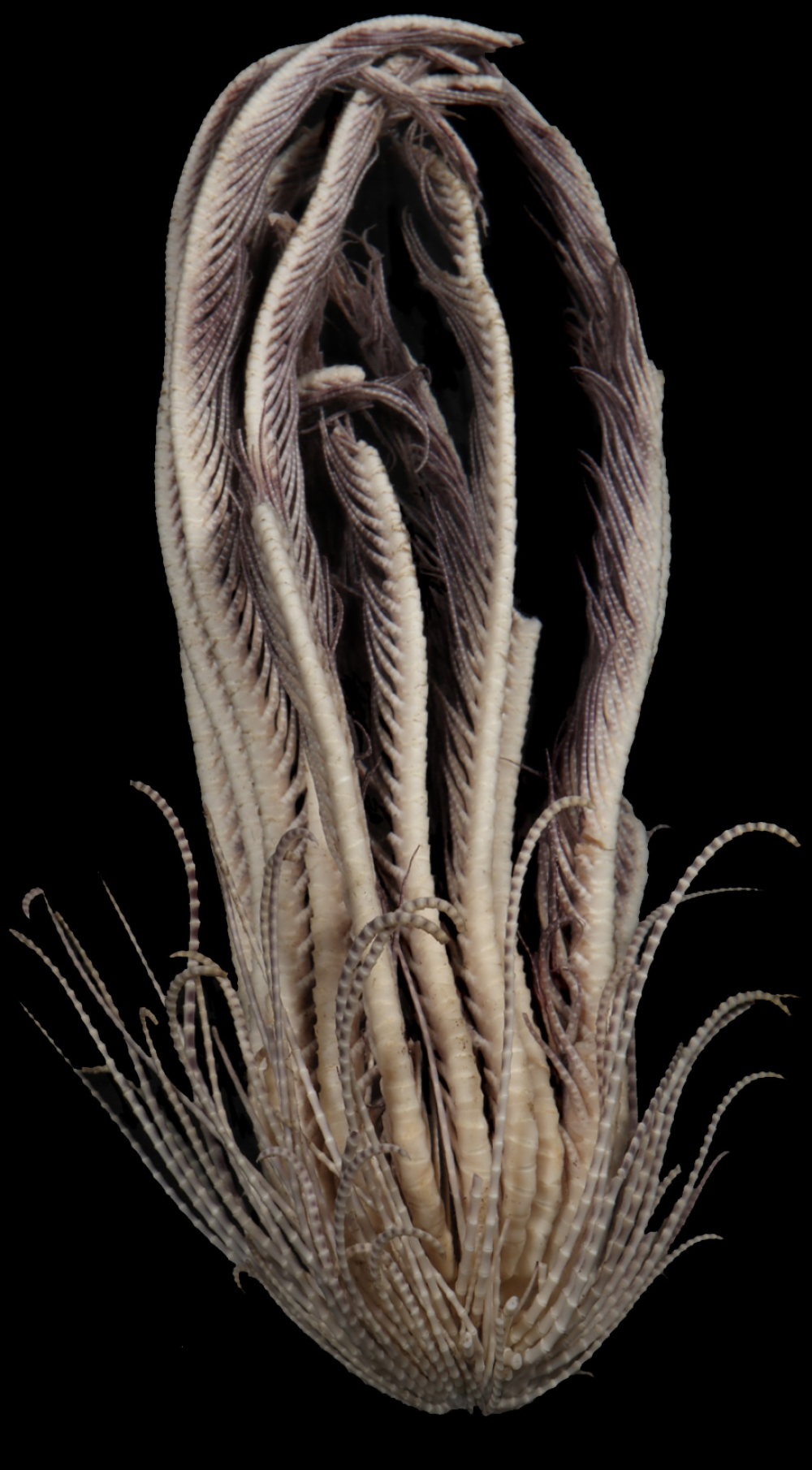The 20-legged Antarctic strawberry plume star Promachocrinus fragarius is one of four new science species identified in a paper investigating the cryptic diversity of a genus of free-floating sessile crinoids. These alien-like organisms are related to starfish, sea cucumbers, and other echinoderms.
Antarctic feather stars fall under the genus Promachocrinus and were once thought to represent a single Antarctic periphery species, Promachocrinus kerguelensis. But new research has revealed that there are actually several species of these weird little feather stars that make their way through some of the ocean’s coldest marine environments. Using their DNA analysis and looking more closely at the complex morphology of the samples collected between 2008 and 2017, the researchers discovered an astonishing diversity.
Seven more species were identified among the feather stars studied, increasing the total number of the genus from one to eight, four of which had never been described before. Species newly introduced to science include the Antarctic strawberry plume star Promachocrinus fragarius, a particularly fruity example of a distinctive crinoid.

Fragaria is a small genus of flowering plants in the Rosaceae family and will be more familiar to you as a strawberry plant because of its succulents. The strawberry plume star may not share its carmine-red color, but the researchers found that its body is sufficiently strawberry-like to inspire the species name.
All listed species – with the exception of P. wattsorum – show a wide range when it comes to depth, from 100 to 1,000 meters below the surface. Although free-floating crinoids are considered largely sedentary, rarely moving animals, they move in search of food.
A floating crinoid is truly a sight to behold. It moves through the water, swinging its many arms rhythmically and fascinatingly. An interesting discovery here is that this new study, which describes morphological differences in crinoid specimens, reveals that the long-held assumption that they all have 20 arms is wrong, that in fact there are only some feather stars with 10 arms.
“Monitoring biodiversity requires robust identification of taxa, and this can be very complex when taxa are indeed cryptic,” the authors write. shows that sequencing (minimum COI) should remain the primary tool.”